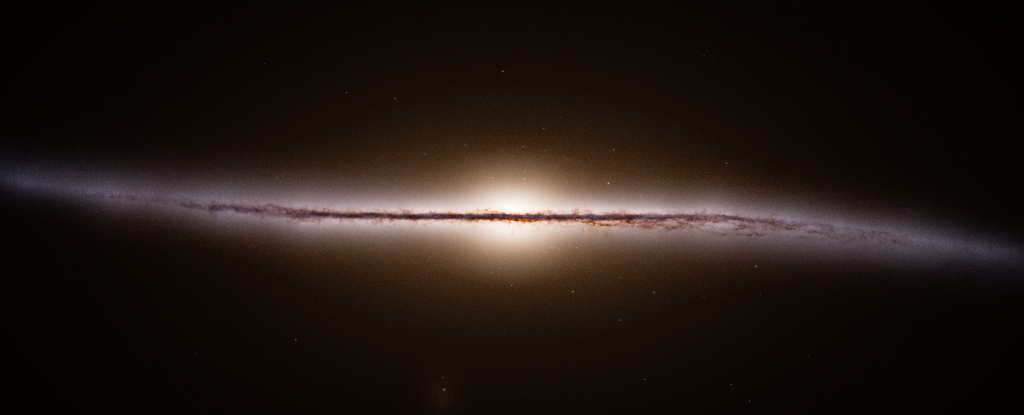One of the strangest galaxies in the neighborhood of the Milky Way has just presented astronomers with a fascinating mystery.
It’s called Centaurus A, and huge jets of plasma shooting from its central supermassive black hole have slammed into something as they travel into intergalactic space.
What is the something? Astronomers don’t know. They’ve called it C4, and whatever sits at this location, it’s going to be interesting, because no other collision in the jets of Centaurus A produces the same V-shaped X-ray emission seen streaming from C4.
Centaurus A is what is known as a peculiar galaxy, located some 12 million light-years from the Milky Way. There are many characteristics that make it an oddball, including an array of orbiting dwarf galaxies neatly arranged around the galactic plane, a strange shape with prominent dust lanes, and a structure that may be the result of two galaxies colliding and merging.
It also has a very active supermassive black hole and is bursting with star formation, one of the closest galaxies to us exhibiting both behaviors. The activity of the black hole is so strong that jets of particles blasting from its polar regions punch into intergalactic space, creating huge lobes of radio emission as they do so.
For this reason, Centaurus A is the subject of much scrutiny from Earth. And one of the most detailed looks yet at the black hole outflows in radio waves has revealed some strange, never-before-seen features.
First, we should probably explain how these outflows happen. When we describe a supermassive black hole as active, that means that it is actively accreting matter from a huge disk of material that swirls around it, like water going down a drain.
But not all the swirling material ends up falling beyond the event horizon. Scientists believe that some of it is diverted and accelerated along the magnetic field lines around the outside of the black holes to its poles, where it is launched into space with tremendous force, creating jets of particles that reach, in some cases, millions of light-years in length.
Because Centaurus A is so close, it represents one of the best laboratories for studying these jets in detail. Astronomers deployed NASA’s Chandra X-ray Observatory to take the closest look yet at the high-energy light created by Centaurus A’s jets, and that’s when they discovered the peculiar V-shaped feature, converging on a bright point-like source of emission.
frameborder=”0″ allow=”accelerometer; autoplay; clipboard-write; encrypted-media; gyroscope; picture-in-picture; web-share” referrerpolicy=”strict-origin-when-cross-origin” allowfullscreen>
It’s as though the jet, as it travels through space at speeds close to that of light in a vacuum, has slammed into something and generated outflows, with each arm of the V measuring some 700 light-years.
It’s unclear what that something is. It could be a massive star, or a knot of turbulence. Whatever it is, the arms of the V could be created by an interaction between the jet and the object that blows material away from the point source. Because this material is also interacting with the jet, it, too, glows in X-rays.
Even in this model, though, the V structure is hard to explain. One would expect that the outflows from the point source would be aligned with the flow of the jet, but that’s only true of one of the arms. The other appears at an oblique angle that is difficult to explain. Especially since other collisions within the jets appear as radio blobs, without defined structures like the V of C4.
As yet, we have no answers. It may take more observations, across a range of wavelengths, to figure out what’s creating the strange V-shape X-rays in the jets of Centaurus A. Given the likelihood that we’re going to continue staring at our weird neighbor, however, answers are probably only a matter of time.
The research has been published in The Astrophysical Journal.





